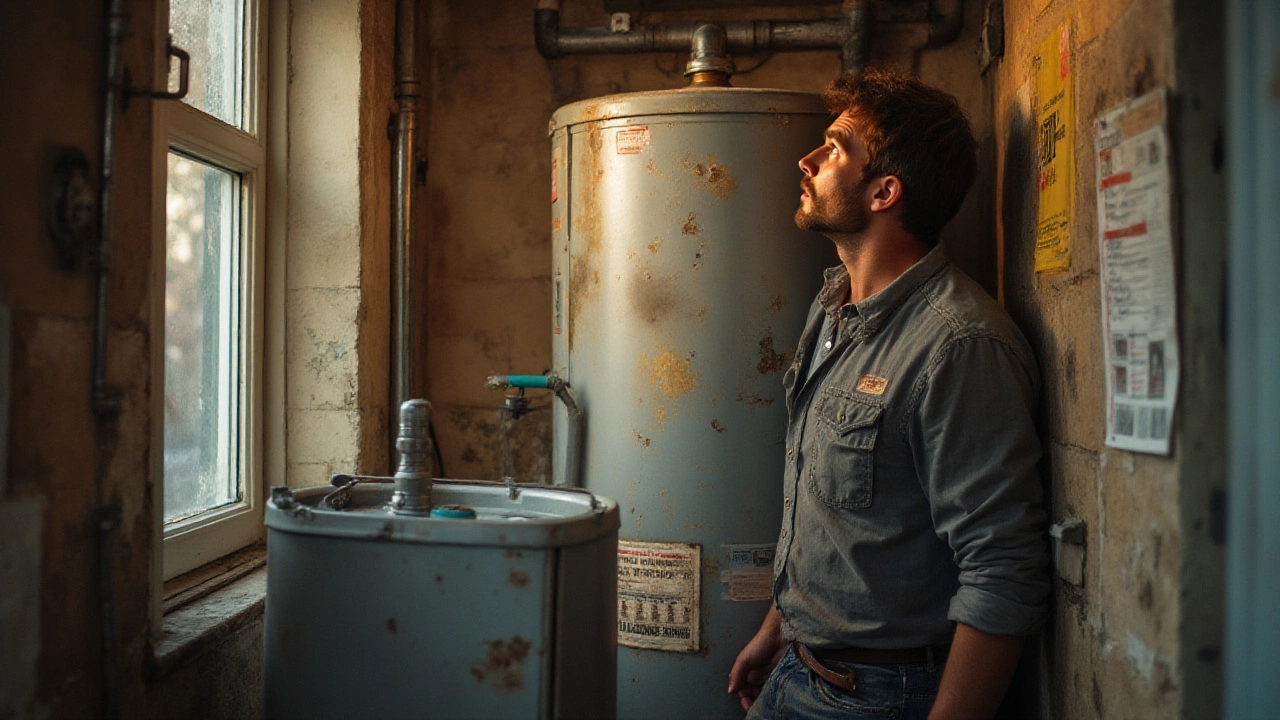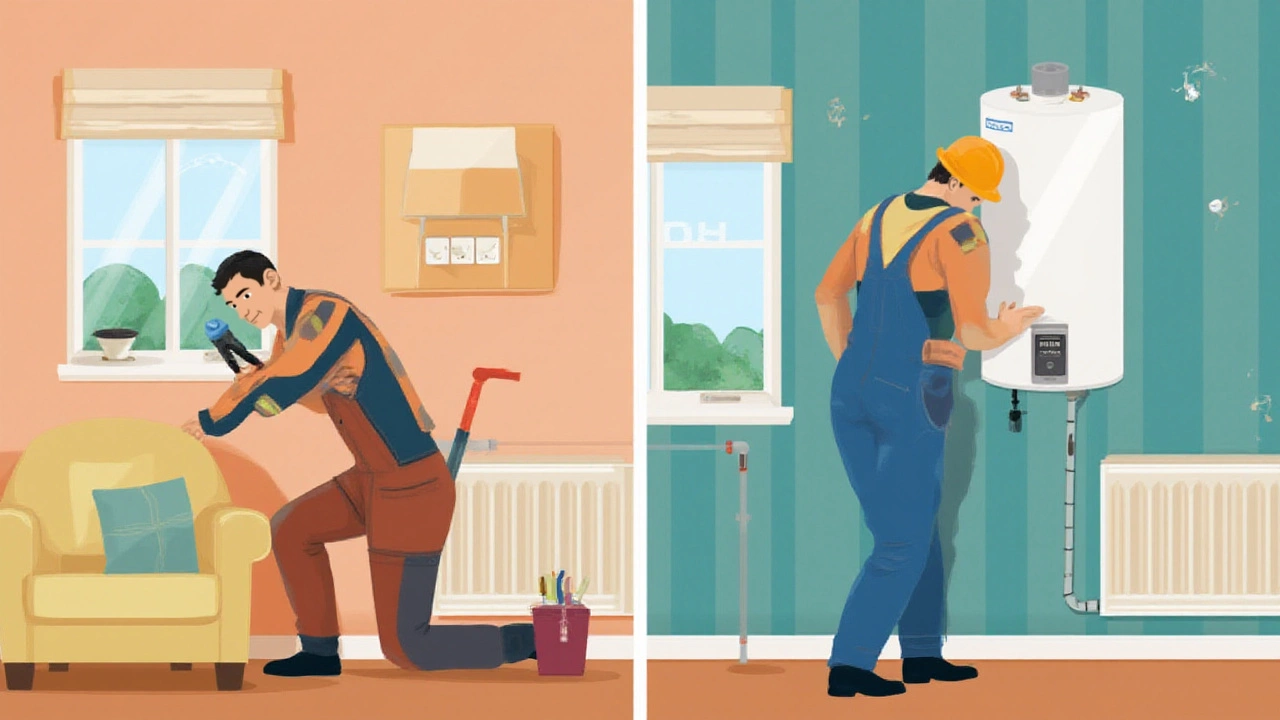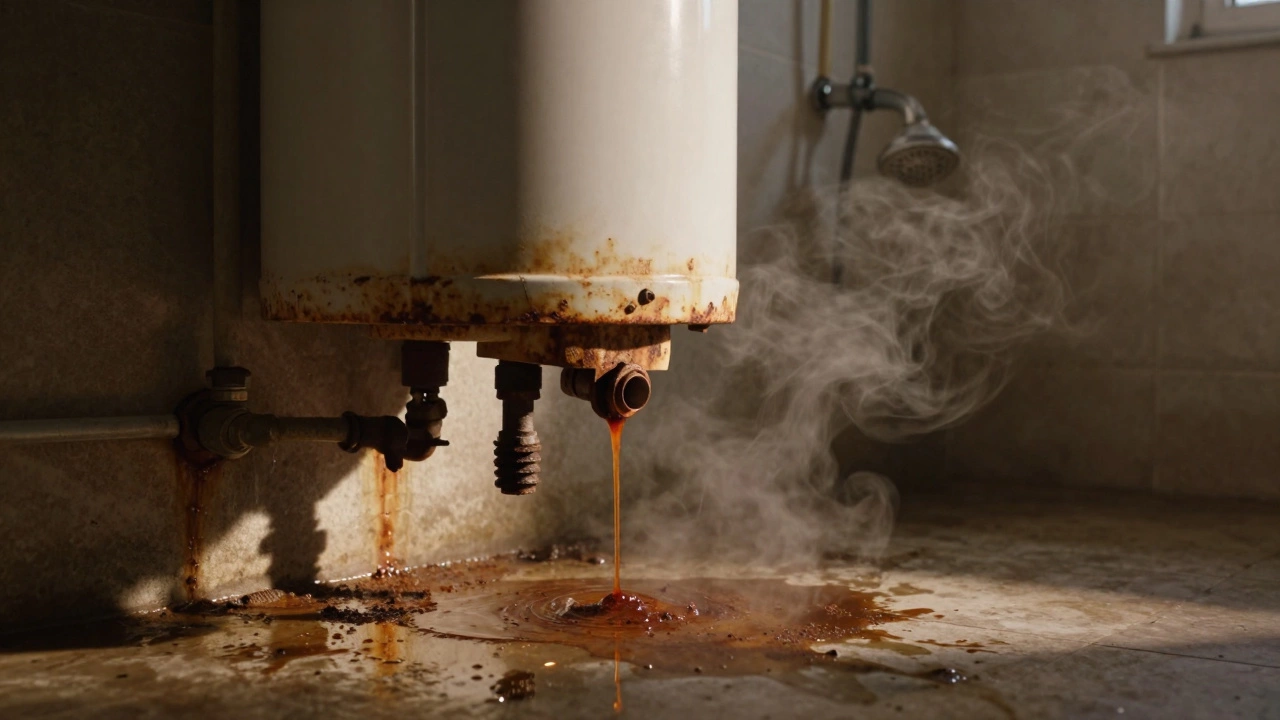
- 2 Aug 2025
- Gideon Thornton
- 0
If the ancient rumble in your airing cupboard sounds like it’s come straight from the Jurassic era, you might be living with a 20-year-old water heater. That groaning, clanking metal tank’s been quietly ticking along for decades, but is it actually worth pouring more money into keeping it alive? Or, is it time to accept that science—and your wallet—might have a point urging you to put it to rest?
The Real Lifespan of a Water Heater
When people talk about water heaters lasting decades, they rarely talk about how reliable they are after the first ten or fifteen years. Most experts, including British Gas, reckon the average hot water cylinder or tank-type heater should last between 8 and 12 years if you take decent care of it. After 20 years, you’re well beyond the original life expectancy. At this point, that water heater’s basically running on borrowed time—kind of like that old car nobody’s brave enough to take on the motorway anymore.
It’s not just about ticking off the years, either. Metal tanks slowly corrode as the sacrificial anode rod inside them depletes. When the anode is spent (usually at around the 8-12 year mark, sometimes sooner if you have hard water, like in Bristol), the rest of the tank starts to rust. This leads to leaks, sediment build-up, and all sorts of other headaches. Even if the thing’s been a marvel of reliability up to now, reaching the two-decade mark is like pulling an all-nighter before an exam—you can do it, but things might go sideways at any minute.
Here’s a quick look at the average lifespan of different water heater types:
| Water Heater Type | Average Lifespan |
|---|---|
| Conventional (Tank) | 8-12 years |
| Tankless (On-demand) | 15-20 years |
| Heat Pump | 10-15 years |
| Indirect (with boiler) | 10-15 years |
So—if your conventional tank heater’s 20, it’s well past its best before date. Sure, there are folks who’ll say, “Mine’s been running for 30 years without a hiccup!” but you don’t see them opening it up to check for rust, do you? Don’t ignore the fact that parts become scarce too, making repairs harder and pricier.
Cost vs. Value: What Are You Actually Paying For?
Let’s get into pounds and pence. Repairs on old water heaters usually aren’t just patch jobs—by the time one thing goes, something else is probably on borrowed time. A professional callout for an old heater can set you back £80-£150 for a basic visit, and that’s before you even factor in the cost of spare parts, which can easily tip over £200 if you need a heating element, a thermostat, or a new valve. If it’s something more serious, you could be looking at half the price of a new unit, or even more, chucked at a heater with no guarantees it’ll last another winter.
Here’s what typically needs fixing or replacing in water heaters over 15 years old:
- Heating elements wear out—leaving you with lukewarm showers.
- Thermostats go flaky, causing scalding or chilly water.
- Sediment builds up inside the tank, making annoying popping noises and cutting efficiency.
- Pressure relief valves can get stuck or leak.
- Corrosion leads to leaks: you could end up with soaked floors and soggy plasterboard.
If you’re in Bristol or anywhere else with hard water, you might have even heavier scaling, meaning the heater’s working harder for every litre of hot water it produces. That’s extra money out the window every month. The latest energy-efficient models can shave 10-15% off your bills, meaning over a five-year period, you could literally pay off that new system with the savings.
Look at long-term value, not just the upfront cost. Even if you patch up a leaky tank today, the energy waste (British homes lose about £70 a year on average from inefficient water heaters) and the risk of a massive failure can quickly erase any saving. And if you’re thinking of selling your place, buyers and surveyors will immediately spot an ancient water heater—and probably use it to haggle the price down.

Safety and Efficiency Risks of Old Water Heaters
It’s easy to forget about the safety bits until something goes bang (or gushes). With a water heater pushing 20 or more, the chance of a bad leak or even tank rupture goes up dramatically. If the tank rusts out, you could wake up to 80 litres of water soaking your floor. Flood damage is expensive—and that’s before you even start worrying about that chance of electrical faults or scalding if the thermostat fails.
You’ll hear stories about electric water heaters tripping breakers or giving off a faint burning smell—usually ignored until there’s a bigger problem. A dodgy thermostat can let the water get dangerously hot, upping your risk of scalds. There’s also the slim (but scary) possibility of a pressure build-up if a faulty temperature and pressure relief valve is left unchecked. Nobody wants their water heater to turn into a pressure vessel missile in the middle of the night—seriously, look it up, it’s rare, but it has happened. The HSE (Health and Safety Executive) reports several domestic accidents each year from failed water cylinders, usually in homes with quite old systems that skipped annual servicing.
Efficiency is often ignored when the heater still “works.” Old heaters—especially those with chunks of limescale—can take twice as much energy to heat the same amount of water. A 2023 study across UK homes showed that heaters more than fifteen years old used 18% more energy on average, compared to modern A-rated replacement units. That’s like putting petrol in a car and watching half of it leak away whilst you drive.
When Is Repair Still an Option?
Does this mean you should always toss a 20-year-old water heater straight to the tip? Not so fast. Sometimes a repair makes sense—usually if you’re in a pinch, about to move, or have a rare model that’s held up surprisingly well. For example, if the only fault is a failed thermostat or heating element (and your tank looks clean, with zero rust around the fittings), a £100 repair might get you another year or two. That’s especially worth considering if you’re on a tight budget or renting and can’t do a full replacement. But these cases are the exception, not the rule.
Quick checklist for repairs that might be worth it:
- The tank is still structurally sound—no leaks, no rust, no weeping seams.
- It's not making weird clanging noises (a bit of popping is normal with limescale, but loud bangs or metallic groans spell trouble).
- The issue is isolated (like a thermostat that won’t click on, or a heating element that tripped).
- You can actually get the parts (not always a given after 2 decades, so check before ringing a pro).
One good tip: get a heating engineer to inspect the inside of the tank with a borescope. This simple trick can reveal hidden corrosion or sediment mountains that a regular visual check will miss. If the tank’s healthy inside, then a repair might be sensible if the rest of the system is also modern and safe.

Tips for Upgrading: Making a Smart Replacement Choice
Alright, so the answer for most folks with a 20-year-old heater is to get a new one. Here’s where you can get a bit clever about the upgrade. Modern water heaters are much more efficient and come packed with smart features. Some connect to your phone, others use self-cleaning technology to stop sediment build-up—saving you the headache in future.
Look for models with an A or B energy rating; they’ll save you real cash on bills. If you have gas, a combi boiler might do water and heating in one, and you’ll get plenty of options suited for the average two or three-bedroom British house. Electric tanks today tend to come with heat-pump boosters or smart timers, which means you can use off-peak electricity and cut your bill even further. If you love a long, hot bath or your family empties the tank every night, higher-capacity models pay off in the long run.
Don’t forget to ask about warranties. The best tanks now promise 7-10 years on the tank and 2-5 years on parts. If you’re paying extra, make sure it’s for something that’ll last at least as long as your last tank—which, let’s be honest, put in a real shift over its career.
If you’re not sure what’s right for your flat or house, a local heating engineer can talk you through the numbers. They’ve seen the inside of these old beasts and can spot when a repair is just delaying the inevitable. Always ask about removal of the old unit—dealing with a rusty 50kg tank on your own is something most people only try once… and usually regret.
To sum it all up, unless you’re a gambler or it’s a quick fix, the sensible play is probably a replacement. Your energy bills, your back, and your peace of mind will all thank you for it.



